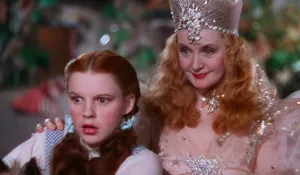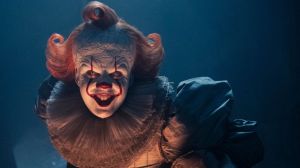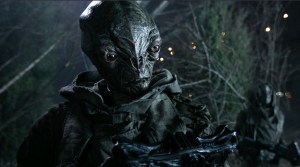Wicked: For Good is now in theaters, delivering the second half of Hollywood’s ambitious and stunning adaptation of the beloved Broadway musical Wicked (which is itself an adaptation of Gregory Maguire’s dark fantasy novel retelling of L. Frank Baum’s The Wonderful Wizard of Oz which itself was adapted into the iconic 1939 musical film The Wizard of Oz — let’s just say, Oz is popular in all its forms.) It’s an incredible movie, incorporating Dorothy’s role in the story of the so-called Wicked Witch of the West and gives a form of resolution to both Elphaba (Cynthia Erivo) and Glinda’s (Ariana Grande) stories.
Videos by ComicBook.com
However, while Wicked: For Good preserves much of the second act of the stage musical, it’s not an exact adaptation. There are numerous differences from the stage to the screen, differences that expand the story of the two women and of Oz itself without sacrificing the musical’s beloved elements, but they are changes just the same. Some of these changes are small while others are pretty significant. Here are five of the biggest, ranked by just how much they make sense in the grand scheme of the Wicked story.
Before we dive in, fair warning: there are spoilers for Wicked: For Good beyond this point.
5) The Final Scene
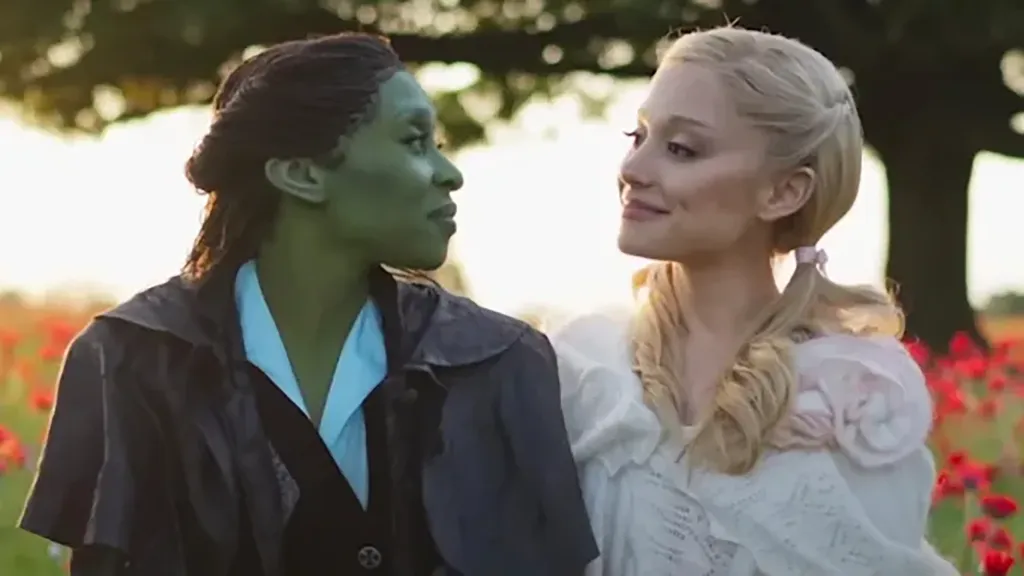
No, we aren’t talking about Elphaba and Fiyero’s departure from Oz and Glinda’s moment with the Grimmerie — we’ll get to that one. We’re talking about the last moments of the film where we get one final flashback of Elphaba and Glinda in school, the two of them sitting with Glinda, wearing a white hooded jacket, whispers something in Elphaba’s ear.
The image is an homage to the iconic poster for the Wicked stage musical. That poster has been a major component of the iconography of Wicked since its debut in 2003. This change is something that was done strictly for the film likely as fan service, but it is something that works. It’s a beautiful moment that acknowledges the musical before it and also is just a truly beautiful image to end the film on.
4) Young Galinda
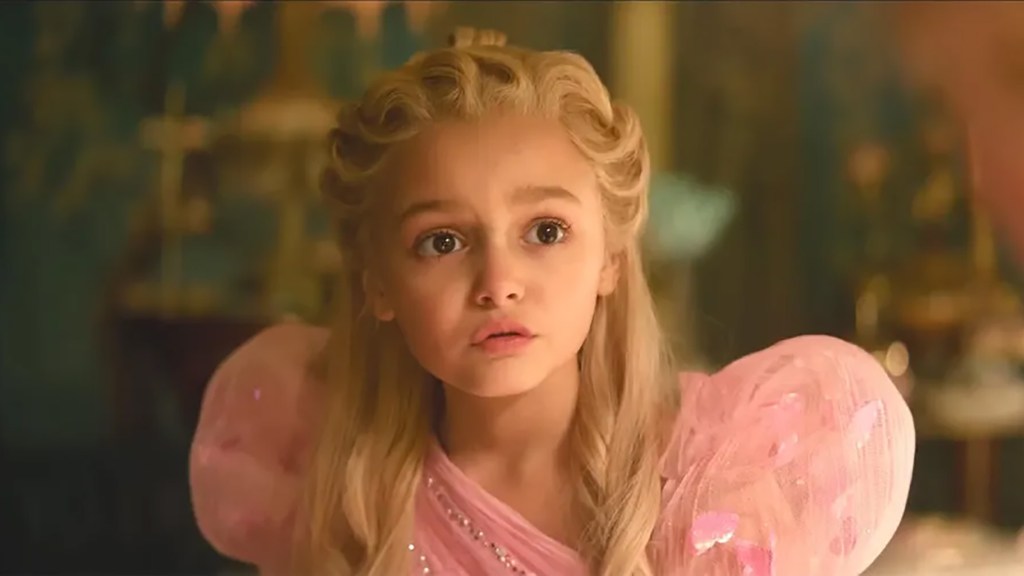
While Wicked: Part One gave audiences a look at young Elphaba which was an addition that film made from the stage, Wicked: For Good added a flashback for young Galinda as well. Audiences are given a scene of a young Galinda at her birthday party where she is gifted a wand and eagerly tries to perform magic but cannot do so. Instead, when a rainbow appears outside and it’s presented that perhaps she made it happened, she doesn’t challenge the assumption.
The scene was likely added to help humanize Glinda and offer some depth to the character. Glinda undergoes a huge transformation in the film as she starts to reconcile what is happening and her role in it — and what opportunity she has. Up until now, Glinda has been a largely very shallow character whose life has seemed pretty much perfect and the addition of this scene reveals that while she has been loved and adored and has seeming had everything, much of her life has been merely superficial. The scene doesn’t hurt the movie and does help flesh out Glinda as a more well-rounded character, but it also feels a little out of place overall.
3) New Songs

Perhaps most exciting for fans, Wicked: For Good has two new, original songs. Both Elphaba and Glinda get their own brand-new solos in the film. Elphaba’s song comes early on with “No Place Like Home” which is featured in the scene where Elphaba finds animals escaping Oz by way of a tunnel under the Yellow Brick Road — Elphaba uses the song to try to convince the animals to stay and fight. Glinda’s song comes later in the film and is called “The Girl in the Bubble” and is her moment of reflection as she realizes that she’s at a turning point and has to choose to truly be the “good” she’s being framed as being. It’s also framed around the “bubble” concept, which we’ve seen earlier in the film as being a device that was given to her to hide the fact that she can’t perform magic, reminding her that she is a fraud.
Neither song hurts the movie. However, of the two it’s Glinda’s song, “The Girl in the Bubble,” that fits better. Elphaba’s song really feels like a way to just have Elphaba confronted with the realities being faced by the animals in Oz as well as to introduce the idea that not everyone is willing or able to stand with her — the song gives us our first introduction to the Cowardly Lion. It’s also a pretty direct tie to The Wizard of Oz. Glinda’s song, on the other hand, marks a moment of action in the story and helps shift things forward in a tangible way.
2) Nessarose Flies

One of the biggest changes from stage to screen involves Nessarose. In the stage musical, Nessarose longs to be able to walk and that desire is what prompts Elphaba to enchant Nessa’s silver shoes so that she is able to walk. The movie makes a huge change in that it’s not the ability to walk that Nessarose longs for, but that she wants to feel a certain way again, specifically she wants to feel the way she did with Boq at the Ozdust. The movie even changes the lyrics of the song she sings to reflect this, having Nessarose (Marissa Bode) sing, “That night when I felt I was floating on air/I want to feel that again.” Elphaba, instead of enchanting the shoes to make Nessa walk, makes it so that Nessa floats in the air, albeit temporarily, giving her that feeling once again.
This change from stage to screen works very well. In fact, it may actually be better than the stage version where Nessa’s enchanted shoes make her walk. The shift grounds things in a more emotional and therefore fleeting desire, which makes everything that happens next all the more devastating and tragic and, ultimately, makes Nessarose’s fate somehow more painful. It makes a lot of sense and is a change that we frankly wish had been in the original musical from the very beginning.
1) Glinda and the Grimmerie
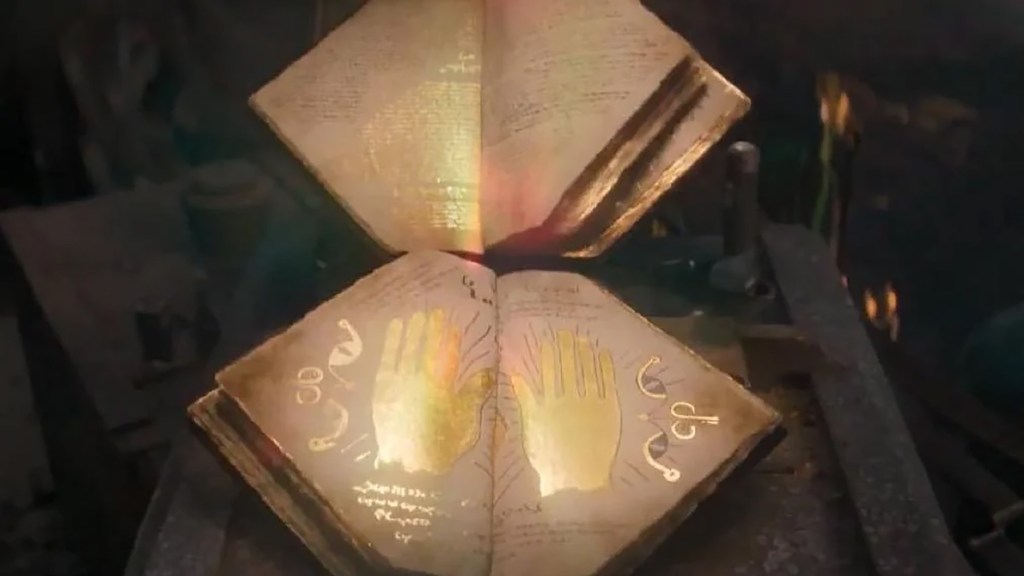
Perhaps one of the biggest and most stunning changes from stage to screen is that of Glinda and the Grimmerie. In their final meeting, Elphaba gives Glinda the Grimmerie, though Glinda does not have any magical talent, something that we have been made aware of several times throughout both films. However, in the closing moments of Wicked: For Good, as Elphaba is departing Oz, the Grimmerie opens up for Glinda, suggesting that Glinda might finally have access to magic at last.
What’s interesting about this scene is there are multiple ways of interpreting it. You can interpret it as Glinda finally becoming truly worthy of magic as she genuinely becomes Glinda the Good and, thus, the Grimmerie opens for her. You can also interpret it as Elphaba opens the Grimmerie for her friend as she departs Oz, bestowing her magic upon her friend so that she can be the good. No matter how you interpret it, it is a powerful moment that puts a perfect punctuation mark on the story. It also works in the sense that leaves the viewer with something to talk about while also keeping the door open for more stories set in Oz. As fans of Maguire’s books know, there is quite a bit more to be told after the events of Wicked — and leaving Glinda with the potential for magic is a tantalizing way of keeping the door open.
What do you think? Let us know what you think the biggest changes in Wicked: For Good are in the comments What do you think? Leave a comment below and join the conversation now in the ComicBook Forum!

